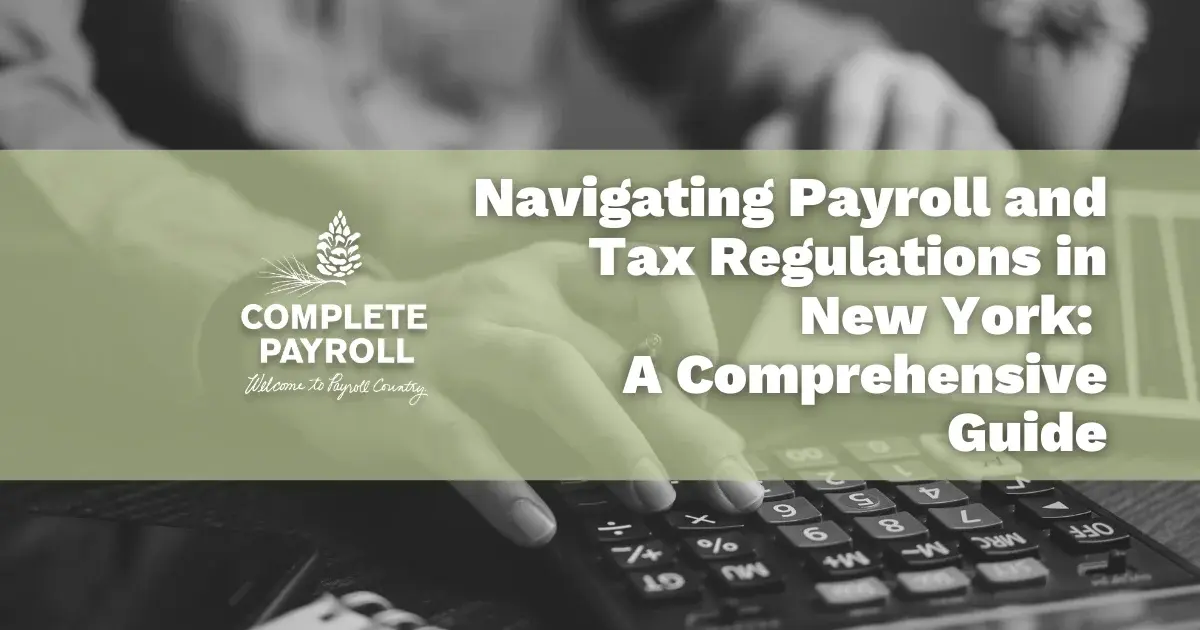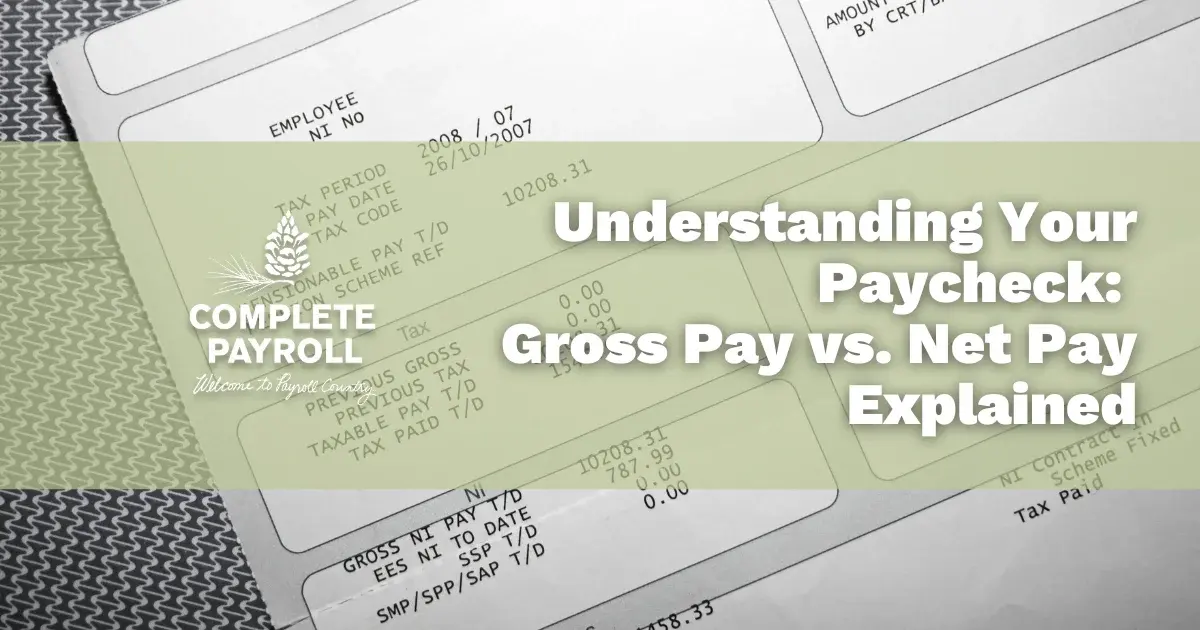Mastering Payroll: How to Calculate Disposable Earnings Accurately
Written by Rick Fish, Jr., C.P.P.

Disposable earnings may seem like just another complicated aspect of calculating payroll. However, once you have a firm understanding of them, they are simple to calculate.
An employee's disposable earnings are determined after subtracting all mandatory deductions from his or her gross earnings. This means that disposable earnings are the amount you earn, minus the mandated involuntary deductions, but before voluntary deductions. Essentially, this is the amount of earnings you have after taxes and other legally required deductions are taken out that you have to “dispose” of.
It’s important for payroll professionals, HR personnel, and small business owners to have a full understanding of what disposable earnings are and how to calculate them accurately and correctly to ensure they meet all legal compliance and standards.
What Are Disposable Earnings?
Disposable earnings are determined by subtracting all deductions required by law from an employee’s gross earnings. The Consumer Credit Protection Act (CCPA) defines gross earnings as “compensation paid or payable for personal services, including wages, salaries, commissions, bonuses, and periodic payments from a pension or retirement program.”
Disposable earnings refer to the portion of an employee’s income that is available for spending and saving after legal deductions have been taken out. Legal deductions include federal, state, and local taxes, social security tax deductions, and other mandatory payments such as child support or bankruptcy court orders.
The amount remaining after all mandatory deductions have been withheld from gross income is the net income that employees can “dispose” of, however they choose.
Understanding each element that goes into calculating disposable earnings will help ensure an accurate paycheck. Since disposable earnings are the result of taxes and other mandatory deductions, miscalculating these elements can result in a miscalculated employee paycheck and tax issues.
Key Deductions to Include in Disposable Earnings Calculation
There are two different types of deductions payroll professionals need to keep in mind while calculating disposable earnings: mandatory deductions and voluntary deductions.
Mandatory Deductions
Mandatory deductions are those that employees are legally obligated to have taken out of their gross income. Once these are taken out of a paycheck, this will give the disposable earnings amount.
Here is a mandatory payroll deduction guide:
- Federal, state, and local income tax
- Social Security and Medicare tax
- State unemployment, workers’ compensation, and disability tax
- State-mandated payments for state employee retirement systems
Voluntary Deductions
Voluntary deductions are what are taken out of a paycheck of the employee’s own accord. So it is not legally required, but employees choose to have them deducted from their disposable earnings all the same. Common types of voluntary deductions include health insurance, dental insurance, retirement contributions, and union dues.
Wage Garnishments from Disposable Earnings
Employees' disposable earnings are also referred to as the portion of their wages that can be eligible for wage garnishments. Wage garnishment from disposable earnings refers to a legal process when a portion of an individual's earnings is withheld by an employer by a court order directing them to withhold a portion to pay a debt.
Wage garnishments include child support and payroll deductions such as:
- Child support: After legally required deductions, employees will have child support taken out next if they are responsible for supporting a spouse or child.
- Bankruptcy court orders: These garnishments are related to bankruptcy settlement payments.
- Tax levies: A federal tax levy is a portion taken out of a paycheck to pay towards an individual's unpaid taxes.
- Federal and state taxes: Unpaid taxes will be garnished from an employee’s disposable earnings.
- Other debts: Other debts include consumer debt, personal loans, and student loans.
Tax Levies and Child Support Orders
Wages already subject to withholding for tax levies, bankruptcy orders, other child support withholding orders, or wage garnishments are not considered deductions required by law when figuring disposable earnings. Therefore, they should not be subtracted from gross earnings when determining the maximum amount subject to child support withholding.
However, a federal tax levy already in effect when the child support withholding order was issued has priority over a newly issued child support withholding order. The date of issuance of the tax levy or child support withholding order determines priority, not when it is received by the employer. If an employer is unsure of the issuance date, they might need to check with the agency that issued the levy or order to determine the original date of issuance.
The amount required to be deducted under the order with priority must be taken into account when determining whether the maximum deduction under the CCPA has been reached.
Common Mistakes in Calculating Disposable Earnings and How to Avoid Them
Managing payroll can be a complicated process, and maintaining compliance and ensuring employee satisfaction require accurate calculations of disposable earnings. One of the most common mistakes when it comes to navigating and calculating disposable earnings is overlooking mandatory deductions. Again, mandatory deductions include federal and state income tax withholding, FICA taxes, such as social security and Medicare, and local tax withholdings.
For payroll professionals, these are the key deductions to carefully and accurately withhold from an employee's paycheck to produce accurate disposable income. To best avoid mistakes, payroll professionals should make sure they are informed and up-to-date on each applicable tax rate, as these vary state-to-state and locally.
Another common mistake is misinterpreting voluntary deduction rules. Some common mistakes when it comes to voluntary deductions include:
- Misinterpreting mandatory deductions: Not all deductions are mandatory; voluntary deductions come after all legally required deductions.
- Misunderstanding amounts: Employers and payroll professionals should make sure they have the correct amount or percentage deducted from their employees paycheck.
- Pre-tax vs. post-tax deductions: Some deductions are pre-tax, while others are post-tax. Contributions to a retirement plan can either be pre-tax or post-tax, depending on the type of retirement account. Payroll professionals should ensure they know which deductions and contributions are pre-tax and post-tax.
- Miscommunication: Employers and employees should have clear explanations of all deductions, mandatory and voluntary. Clear communication should take place during the onboarding process, with regular updates throughout the year. If employees want to change the number of claimants and deductions on their W-2 throughout the year, they can submit an updated one to HR.
Legal Considerations for Disposable Earnings Under CCPA
As with every aspect of payroll, it’s incredibly important that payroll professionals understand the correct way of calculating disposable earnings to avoid any legal complications.
One aspect that payroll professionals or small business owners must understand is the priority of deductions taken from a paycheck. A failure to properly take out deductions in the right order can lead to tax complications. Generally, the correct order to take out deductions from an employee’s paycheck is federal, state, and local taxes, followed by wage garnishments.
Each state has its own tax rates, rules, and laws. All payroll processors should be up-to-date and informed of the tax regulations and laws where their business is located. Due to the variance of state tax laws, each state will have a different method of deducting and calculating disposable earnings for employees.
Conclusion
What are disposable earnings? Disposable earnings under CCPA refer to the remaining portion of an employee's wages after all legally required deductions have been made. With their remaining disposable earnings, they can use this for voluntary deductions or any other personal reason.
Calculating disposable earnings can be done using this formula: gross income - taxes withheld = disposable earnings.
All individuals who process payroll should have a clear understanding of how to calculate disposable earnings correctly and which deductions should and should not be deducted according to their state and local legal requirements.
If you are unsure if you are accurately withholding the right amount from an employee's paycheck or withholding deductions in the correct order, reach out to Complete Payroll for professional, personalized guidance for your business!
















